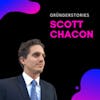Blitzscaling vs. Bootstrapping: How to choose your founder journey - Casper Rasmussen, Monta
Monta hat mehr als 120 Millionen Euro für ihre Software Plattform für Elektrofahrzeuge eingesammelt, um die Zugänglichkeit von Ladeinfrastruktur zu verbessern.
Innerhalb von 3 Jahren ist Monta auf circa 300 Mitarbeitende skaliert, stellt aktuell 10-20 Mitarbeitende monatlich ein und vervielfacht sich Umsatzseitig jährlich.
Zuvor hat Monta Gründer Casper Rasmussen 500+ Mobile Apps mit seiner Agentur gebaut und die Agentur auf 20 Millionen Umsatz gebootstrappt.
Wir sprechen über die Unterschiede von Bootstrapping als Agentur und dem Blitzscaling-Ansatz, wie Monta es aktuell macht.
Casper hat außerdem einen Rollenwechsel vom CTO zum CEO vollführt - was hat ihn bei dieser Aufgabe besonders gefordert? Außerdem gibt er dir einen Rundumblick zur schnellen Validierung von Ideen und Vermeidung tropischer Fehler: Was sind die größten Herausforderungen, die Early Stage-Founder erwarten? Spoiler: Burnout und negativer Stress sind nur ein Teil des Ganzen.
Was du lernst:
- Welche gravierenden Unterschiede gibt es bei der Gründung eines bootstrapped-cases und eines venture-unterstützten Unternehmens?
- Welche Fehler können dir im Hiring begegnen und wie vermeidest du sie?
- Woran macht man fest, ob eine Businessidee und eine Entscheidung gut genug sind oder eben nicht?
- Welche Herausforderungen erwarten dich, wenn du von einer spezifischen Rolle (hier die des technischen Leaders) zu einer generalisierten Rolle (hier CEO) wechselst?
- Wie kannst du Stress und Burnout vorbeugen bzw. wie verhinderst du, dass dein Startup dein Privatleben aushebelt?
ALLES ZU UNICORN BAKERY:
Casper Rasmussen
LinkedIn: https://www.linkedin.com/in/casper-h-rasmussen-63b13922/
Monta: https://monta.com/
Unicorn Bakery Whatsapp Broadcast:
Hier erfährst du alles, was du als Gründer wissen musst: https://drp.li/jrq5S
Unser WhatsApp Broadcast hält dich mit Einblicken in die Szene, News und Top-Inhalten auf dem Laufenden.
Marker:
(00:00:00) What are the main differences between building a bootstrapped case like the agency and a venture case like Monta?
(00:02:24) How does the venture case challenge your growth - is it less focused than in the bootstrapping-experience?
(00:04:32) Your most important learnings and mistakes in Hiring and Onboarding?
(00:07:48) How do you evaluate if you bring in someone from the outside or promote from inside your own team?
(00:09:40) What makes a decision good enough to take it?
(00:11:21) How do you evaluate your ideas?
(00:15:02) What are the biggest mistakes for early stage founders?
(00:23:54) What are the hardest parts of switching roles from "only" being a CTO to CEO?
(00:28:45) Would you say your personal life suffers from being a founder?
(00:34:03) Who would you recommend becoming an entrepreneur and raising venture money?
(00:40:58) Your tips for early stage founders that are struggling?
Hosted on Acast. See acast.com/privacy for more information.
(00:00:00) Welcome to a new episode of the Unicorn Bakery. (00:00:02) My name is Fabian Tausch and today we will look into Monta's recipe for success. (00:00:07) Monta is a software platform for electric vehicles, empowering drivers, industry partners and businesses to cover all charging needs around electric vehicles. (00:00:15) Monta recently raised a 80 million Euro Series B and raised more than 120 million Euro in total, which is a lot for only being three and a half years old, I think. (00:00:26) And Kaspar, the founder, started a mobile development agency, built it to 150 people and bootstrapped it to 20 million in revenue before he sold the company. (00:00:35) So serial founder, full name is Kaspar Rasmussen, just to be precise here. (00:00:41) And I think Kaspar, we have a lot of topics to cover. (00:00:44) So welcome to the Unicorn Bakery. (00:00:46) Thank you very much. (00:00:47) I'm happy to have you here. (00:00:50) I think to dive a bit deeper into the general question, I mentioned before that you were running an agency and bootstrapped it to 150 people in seven years. (00:01:01) And by now, Monta is three, three and a half years old, I think. (00:01:05) And you're already around, LinkedIn says 300-ish people, like 295 says LinkedIn, but whatever the exact number is, in three, three and a half years, what are the main differences building a bootstrap case like the agency you built and building a venture capital play like you're doing with Monta right now? (00:01:25) I think the whole fundraising is the thing which really separates it. (00:01:29) You take in capital, which does two things to you. (00:01:32) It gives you the ability to think a little bit further ahead. (00:01:36) It's not about chasing the money for the next month. (00:01:38) It's about building something up, which will be sustainable later and keep growing. (00:01:44) But the second thing you do is you sign up for a very aggressive growth that you will have to two, three, four X every year to keep up with the expectations. (00:01:53) So that's the main differences. (00:01:54) I think at the start, it really felt like, okay, this is refreshing. (00:01:57) We have money to hire a people person early. (00:02:02) We can get a finance employee, like a lot of these like staff functions you can't afford when you're bootstrapping, that you can get in earlier. (00:02:10) And that means you can also quickly scale. (00:02:13) But obviously, as you go through the rounds, expectations are coming as well. (00:02:17) That's the pressure you don't necessarily have in bootstrap. (00:02:19) You can do it your own way. (00:02:20) And if you want a year where you are just growing 10%, you can decide to do that. (00:02:25) It feels like when we talked beforehand, you mentioned at some point that you're hiring 10 to 15 people a month. (00:02:32) And therefore, in a time where not many businesses are hiring that rapidly, it feels like you're blitzscaling mode. (00:02:40) Of course, sometimes it's a bit more, sometimes a bit less. (00:02:42) Sometimes it's a new country. (00:02:43) Sometimes it's like there are different reasons why you're hiring, how much you're hiring. (00:02:47) How does it challenge you compared to the bootstrap experience that you have where you were growing in a bit more, let's say, focused and planned way than you might do right now? (00:02:58) So in the agency, we always hired through the manager layer. (00:03:02) So the teams, they ran the hiring processes, they onboarded the new employees. (00:03:08) So it was like all the work was kind of distributed out in that sense, where now we are hiring this many people here. (00:03:14) So you need to build up a full machine just to do that. (00:03:17) So we have a talent acquisition org, which are kind of helping source everything, getting people signed. (00:03:23) There's an onboarding team, which are running the first X days in Copenhagen, and then making sure they land well out in their departments. (00:03:30) There's a full program for that thing now. (00:03:32) So it's way more structured, right? (00:03:33) And I think that's needed when you start hitting those numbers. (00:03:37) Here in this month, we had 22 new colleagues. (00:03:40) So it's quite a lot to take in. (00:03:42) How do you make sure that you bring all these people up to speed as well? (00:03:46) That is one of the main challenges we're having is getting people to ramp quick enough. (00:03:50) So that's by investing into the people org and into the onboarding experience when they arrive at the office the first day and get their computer. (00:04:01) How do we quickly get the knowledge transferred around the business, around the industry, around our competitors, around the features we're building? (00:04:11) And then when they land out in the teams, how do we make sure that they are helping the teams and start contributing quickly so they can lift some weight as well? (00:04:20) Because we are spending a lot of resources on attracting and onboarding. (00:04:24) So you need to get people up to speed quickly. (00:04:26) But it's no easy task. (00:04:27) It's like small iterations, improving it month on month. (00:04:32) Knowing that you hired a lot of people yourself, either in the agency or at Manta, what would you say were the biggest mistakes while onboarding and ramping people up that cost time, that make it more difficult, that are a burden for the process? (00:04:45) So I think the mistake we did in Manta was that we didn't invest in a TA org early enough. (00:04:52) So we were actually dealing with it like in the agency. (00:04:55) So the hiring managers was responsible for recruiting themselves. (00:05:00) So a lot of the time was spent on doing that. (00:05:05) And then the second thing is that we didn't have a good enough framework for deciding if it worked out with a new employee. (00:05:13) And that's something we're still working on, because you want to give everyone a fair chance to learn the new job and get into the new industry, etc. (00:05:22) But I think the classic thing is just that, very often, if it doesn't work out very nicely within the first four to six weeks, there's a very good chance that you don't have that person a year after. (00:05:34) So then it's more a matter of when you want to make that decision and you get emotionally attached to it. (00:05:41) It's a new colleague, they might be a nice person to work with or could be a good friend to someone else in the organization. (00:05:50) But that's a tough one, making that call as early as possible. (00:05:55) Let's say you hired throughout the two organizations and mathematically a bit of fluctuation, more than 500 people in total. (00:06:06) How many did you have to let go in the first six months because you realized, okay, it's not working out? (00:06:13) Probably between 50 and 100, I would say, maybe more than 50 in the first six months. (00:06:18) Generously put, like one in 10, one in 12 is probably a range. (00:06:24) And I think if you look at the best performing companies, that is like 10% turnover the first six months is not unnormal. (00:06:34) And then if you can keep it between 20 and 30% overall, then you have something to build with. (00:06:40) If you go way above that, then you will have to recruit a lot. (00:06:45) But I think another difference I noticed very clearly was that in the agency, on the bootstrap business, because you only added a few extra people to each team every year, it was easier to take people internally up through the ranks. (00:07:01) So someone who was the best designer could be a manager for two and then eventually manager for five and six and 10 and 15, or five, eight, nine years. (00:07:12) But in our months of today, that quickly accelerates very fast. (00:07:18) So from the time you get manager, and then there's 10 people on your team, then suddenly there's 15 people. (00:07:24) And if you don't have the time to kind of grow into it, that gets tough. (00:07:28) And then we have to split up the teams or hire above or stuff like that. (00:07:33) So I think that's also a thing I've seen, there's a lot of opportunity in organization moving this quickly. (00:07:40) But the bar is also just raising all the time. (00:07:43) Like being an engineering manager year one to year two to year three, the bar is drastically different. (00:07:49) How do you evaluate? (00:07:50) Can we pull up the person internally that was handling it by now? (00:07:55) Or do we have to bring in from somebody from the outside? (00:07:58) Because it's always a, there is no black and white, it's always a in case decision. (00:08:02) And I would like, and I think a lot of founders that are doing it the first time, for example, would love to understand kind of a framework that might not always be 100% perfect, but to understand, okay, how do I handle such a situation? (00:08:16) So like in cases where you can bring someone up and when you have to go out and hire, that's a super tough one. (00:08:23) Like I had a lot of good experience bringing people up and giving them the opportunity to grow in the organization. (00:08:30) It brings very good culture. (00:08:33) You get very loyal people, which have been, which will be thankful for getting the opportunities. (00:08:41) But it can also be like slowing down the growth if they need a year or two to fill out the shoes in the new job. (00:08:51) So I think like you need to look hard at your team and you need to, if you bring people up and they need to grow into the position, I think the best thing is to be very aligned about like, okay, I'm happy to give you this opportunity. (00:09:06) This is how it's going to work out. (00:09:07) You need to pick up on all these things now, and you need to do this more, these things you're not doing today. (00:09:16) And this is how I'm going to evaluate it after one month, three months, six months. (00:09:22) And if it doesn't work out, I think the best thing is to be upfront about what a way out would be, because it's just so sad to bring someone up and then it doesn't work out, and then they have to leave the organization. (00:09:36) And that's one of the problems that can be in it. (00:09:40) It always sounds like easier than it is. (00:09:43) I can imagine that every time it's like such a struggle. (00:09:47) And at the same time, you have to make decisions because otherwise you can't move forward. (00:09:51) So therefore, a quick question on decision making, what would you say makes a good decision or a good enough decision to take it? (00:09:59) Okay, good question. (00:10:00) Good question. (00:10:02) In Monza, we have been extremely execution heavy and focused. (00:10:07) In the very start, we didn't spend too much time thinking about how this is going to evolve over year one to achieve. (00:10:13) It's always been about, okay, let's go for this thing, solve it as quickly, as good as possible, and then move on and move on. (00:10:19) And then slowly you form the strategy based on how the market kind of adopts your products and services as well. (00:10:28) And I think for me, the thing about making decisions have always been fairly simple. (00:10:33) I'm probably the one on the team which is like very quick about making up our mind. (00:10:39) Now we have a full team where we're also spending a lot more time looking at data and looking at like how others are doing it and comparing markets and stuff like that. (00:10:48) But I think I'm from the background around like that no decision is the worst decision. (00:10:54) So take any decision in some cases. (00:10:59) And then in other cases where it's like impossible to get back from it. (00:11:03) If it's like taking in a new investor or like large decisions where it will be hard to revert. (00:11:11) That's where you need to spend your time thinking about it and going slow into it. (00:11:17) But yeah, we have been very execution and decision focused. (00:11:21) I can imagine, especially when we look at the timeline on how quickly Monta is accelerating. (00:11:28) And that's also what I would love to focus on in the next few questions. (00:11:32) We think about, okay, you decided to go into the space of electric vehicles. (00:11:37) You decided, okay, I want to do something in here and probably have a bit more of a specific idea what it will be. (00:11:46) But how do you evaluate this idea as quickly as possible? (00:11:50) Because I know a lot of people running around and being like, yeah, and I want to do this and that. (00:11:55) But they have no strategic plan on evaluating their ideas. (00:11:59) And I can imagine also because of the background that you built like 500 plus mobile apps before you have an idea on a framework on how you actually evaluate and move on from that point. (00:12:14) And I think that that was actually kind of a reason why I didn't start something like this earlier. (00:12:20) Like we were sitting in an agency, we were developing hundreds of mobile apps for startups often, a lot of out of UK. (00:12:28) And you just see how few of them are actually getting to seed an A round and how many of them are getting stuck there. (00:12:35) So the mantra was always like, it needs to be a very good idea, otherwise it's probably better to sit on the consultancy side and sell some hours. (00:12:45) But I think, again, if we look at Monsa, it was this thing about, OK, there's a specific problem right now I know I can solve. (00:12:55) It's a market which is booming. (00:12:58) And it's a market which will be taking off over the next 5, 10 years. (00:13:02) That was kind of the reasons why like, OK, so maybe it's not this idea. (00:13:08) Maybe it's something else. (00:13:09) But if you get in to the industry right now with something and get a footprint, then you can kind of find your way there afterwards. (00:13:16) So I think that that's what I would probably suggest to others. (00:13:20) Like it needs to be something where you have an idea that you can solve something from either angle. (00:13:28) It needs to be something you can see that you can get a passion around, because this is often a 10-year project. (00:13:38) So see it as long-term. (00:13:39) And if you don't want to work in account receivables or HR or what it can be for 10 years, then don't start a platform in HR. (00:13:50) Find something else. (00:13:52) And then the last thing is this market. (00:13:55) Is this going to be a market where there will be a built-in growth over the next decade that gives it the opportunity to be even more interesting? (00:14:07) It comes with challenges, right? (00:14:08) In the start, when we were fundraising, we also had to convince investors that the EV evolution was happening. (00:14:15) And in 2020, it was pretty clear in Nordics that it was now going to happen. (00:14:21) But in the rest of the world, it was not. (00:14:23) And still, I would say, like when we fundraised here last year, it's still not 100% clear to you as investors that it's happening. (00:14:33) So you have that problem where if you are in a big industry which already exists and they can calculate the time and say, OK, this is a $100 billion industry, then if you get 1% of that, you have built an interesting company. (00:14:49) But today, we had to kind of show that projection as well. (00:14:54) But I think overall, that's been very good for us to get into an early industry and follow the market while learning how it works. (00:15:02) Having seen so many founders starting, for example, mobile apps, but in general, startups, and then also knowing a few more than just the customers that you had, and having built a company by yourself, what do you think are the biggest mistakes earlier stage founders do in pre-seed or series A stage? (00:15:25) I think some of the things I've seen is like, there's a couple of mistakes I've seen, kind of over and over. (00:15:32) One is that they're building something and they're not spending enough time in the market together with potential customers, et cetera, about how to shape it. (00:15:45) So they're like, they're sitting at home thinking about how they want to build this up without involving potential customers, or they are building it in like very high quality, very scalable code base, infrastructure, et cetera, and spending a lot of time doing that instead of getting something to market and testing out how it works. (00:16:07) So I think I would recommend everyone, especially if it's like, for most cases, there's not going to be millions of users in your products in the start, or even thousands. (00:16:19) So really think about how can you build this in a very quick way where you can test out a lot of things and iterate on that. (00:16:26) And then when it starts to scale, yes, then you probably have to recode everything. (00:16:30) But I think that's still a better way of figuring out what is your product market fit before you start hardening the solution. (00:16:37) And then I think another thing I've seen is like the pre-seed and seed rounds these days are pretty big. (00:16:44) And there's only really one thing you can 100% control as a founder, and that's your cost base. (00:16:49) So make sure you set yourself up for success. (00:16:51) So you have as many months as possible to get that product market fit before you have to fundraise again. (00:16:58) So that means like don't get the expensive office, don't get the expensive catering, don't fly business, like just stay super humble and spend all the money on building the best product and service. (00:17:14) That's a very big recommendation. (00:17:17) We still do that here. (00:17:19) We still have an office a little bit outside of Copenhagen, not in the best shape. (00:17:24) And it's the same thing, right? (00:17:25) It's about making sure that we get as far as possible for the money. (00:17:30) Do you have examples because you said, okay, you don't have to bring every or polish everything perfectly from a software and architecture perspective, for example, do you have examples where the system, for example, broke or things that you didn't automate that took a long time or took manpower until it was possible to say, okay, we need to automate it? (00:17:55) Yeah, plenty of those, right? (00:17:58) We decided to build two features in the early days. (00:18:02) So we run a wallet service so you can deposit money and you can withdraw money. (00:18:05) But we didn't have any integrations to services which could withdraw. (00:18:09) So every day that would just be like Excel sheet published into a Slack channel. (00:18:15) That is the account which needs withdrawals. (00:18:18) And then me and my co-founder Anders was logging into our own bank and just transferring manually. (00:18:25) We decided that we needed to be able to ship charge keys and stickers to customers. (00:18:31) But we didn't have any shipping set up for that. (00:18:36) So we were actually just mailing out from the office and delivering the letters in the post office. (00:18:44) Of course, it doesn't scale and eventually you need to fix it. (00:18:46) But maybe you kill that feature before you have decided that you want to scale it. (00:18:52) And then you saved a lot of resources. (00:18:54) We also decided to invest in like an in-house support team early so we could like leave out some cases we didn't have to solve in the product. (00:19:03) So what we often called it is like think about the happy path, then solve 80%, 90%, 95% of the flows. (00:19:11) And if there's 5% left, which is like in this era, this can happen and you want to do this or this or this, just redirect them into the support. (00:19:20) And then we train them on how to do it there. (00:19:22) And then there's two cases of that every day. (00:19:24) But that's fine. (00:19:25) Like it's still cheaper than solving all the last parts of the product. (00:19:30) And then eventually you will have to go in when suddenly that's 10, 30, 50 cases a day. (00:19:36) That's where you then pick it up and figure out how to automate it. (00:19:40) Did you have the moment that you have to rebuild the platform and then the first version that you did? (00:19:45) Yeah. (00:19:46) So we did two things from the start. (00:19:47) So one was like we built all the APIs and the web portal in PHP Laravel. (00:19:54) And then we decided to break out the big important services into Kotlin. (00:20:00) We had a Flutter app from the start. (00:20:02) So it was a mix between a monolith and a couple of services. (00:20:06) And now we're breaking it out into services and rewriting it. (00:20:09) And the entire web application, which was running the back office, have been redeveloped into a single page application in Flutter now. (00:20:18) So yes, you are going through that. (00:20:20) But now you can do it with a large team. (00:20:22) So you're not stopping up to do it. (00:20:24) You just do it parallelly with other things. (00:20:27) And you just assign 10 people to work on that. (00:20:30) But yeah, of course, at this point, it would have been amazing to be in this new architecture and being fully in the new code base. (00:20:39) But there's always a migration ongoing somewhere when you get larger. (00:20:43) One quick background information. (00:20:45) You've been a CTO for a long time. (00:20:47) Now you're the CEO of Monta. (00:20:49) But you're still, you were very involved in the technical stuff as well, I think, given your profile. (00:20:56) How do I decide on, okay, I want to build it as perfect as possible from the beginning versus okay, I know I have to build some stuff shitty to go forward. (00:21:07) Of course, it's always a balance act as well. (00:21:10) We have this theme so often here in this podcast. (00:21:14) But for me, if I would now start up, I'm not a technical person, that also might be the issue with it. (00:21:21) But I would think, okay, why would I build in inefficiencies that I then know that I have to, for example, revamp in six to 12 months? (00:21:29) Yeah, I don't think the answer should just be there's a chance, there's a good chance that you have completely, you'll learn something in those six months where you decide to either close down the feature or design it completely different anyway. (00:21:43) So you just save yourself a lot of time. (00:21:45) And I think that's what we learned. (00:21:46) It's like, it's not because it's so many features, we have decided to shut down completely. (00:21:51) We've done that from time to time. (00:21:52) But often, the first release, you didn't think about a lot of things, then you take it to market, you learn something, and then you go back and redesign it completely. (00:22:01) And then you make that version. (00:22:03) And then you can harden that instead. (00:22:05) So it's this MVP idea, like, build a minimum of products, get it out, test it, see what the market sees about it, says about it, before you decide to invest into a big tech setup around it. (00:22:18) And I think you need to get, you need to change, not change, you need to find your motivation from something different than, like, I built something in super high quality, it's the perfect animations, the perfect code base, everything is fully tested. (00:22:34) So I have customers which like to use this, I can see it, and I get my joy from that. (00:22:41) And that's how that's very much how I had it. (00:22:44) Like I rather want to build three, three things and get them to market and then figure out which of them is the right one, instead of building one, which is in very high quality from the start. (00:22:55) I think a lot of founders are still not lost, lost is the wrong, they are falsely convinced that they have all the answers, and think, okay, this is the feature that will solve it, rather than okay, those three could be the most relevant, and we have to figure out what the customer actually wants. (00:23:13) And I think it's super hard. (00:23:15) Because you have a gut feeling, you have a bias, you have to say, okay, I test all three instead of just focusing on the one that I think is the best. (00:23:24) Yes, it is. (00:23:26) And I think later on, like when you get bigger scale, it's harder to do these things, because suddenly you release a feature out to a couple hundred thousand customers. (00:23:36) And if it's not in a pretty good state, it's going to hit you very badly as well. (00:23:40) But in the start, when you release it out to 100 users, there's a chance that only 10 of them will pick it up the first two weeks. (00:23:47) And then you help them instead of building it in high quality from the start. (00:23:54) What are the hardest parts of switching from a CTO role and technical leader, in quotation marks only role to the CEO role, with of course, all the technical abilities that you have? (00:24:07) I think the CTO role is probably one of the roles which are changing like most from like a small company to a very large company. (00:24:14) And that's what I went through in my old company as well. (00:24:17) Like in the start, I had 10 engineers and then I had 800. (00:24:21) And at that point, it's a strategy role, it is budgets, it is like operation, it is sales in a CTO role as well. (00:24:33) So you're building up the toolbox for the CEO role as well. (00:24:39) But I think in today's like SaaS businesses or like tech businesses, I think you can be a CEO with any background. (00:24:47) It doesn't have to be the classic business background, which is going to give you the best output. (00:24:54) There's something about having a vision, there's something about having a passion. (00:24:59) And then there's something about being able to work with people, both on your teams, but also your boards and investors are both up and down, which is kind of needed in the CEO role. (00:25:10) And then it's about understanding where you get energy from, and what you want to do, what you're good at, what's your superpowers, and then make sure you get a really good group of people around you to cover all the other things, because no CEO can cover the roles anyways. (00:25:27) So I think that's the way I thought about it in the start. (00:25:31) I was also thinking like, I would probably take it to a certain point, and then we should probably get a CEO in, and then it would be natural for me to step into the CTO role. (00:25:41) But the more I'm kind of getting into it, also hearing from the market and from investors and et cetera, it seems to work out pretty well. (00:25:50) And it's about this, like, can you be the visionary? (00:25:54) Can you be the one with the big ideas and kind of guide the company in that direction without knowing all the answers? (00:26:03) That's really the job, and then set a good team. (00:26:06) So I think maybe that's the decade where we're going to see much more CTOs stepping into CEO roles. (00:26:11) We are starting to see it in the tech companies as well. (00:26:15) For everybody who couldn't follow why in the end you had 800 engineers beneath, that's because you sold your agency to Monster Lab, and there you became group CTO, and therefore you had 800 engineers beneath you. (00:26:31) I think that's an important thing. (00:26:34) Quick question and probably a bit controversially stated, but do you think former CTOs and builders are better CEOs? (00:26:45) I don't think that, I think it's impossible to say if they're better. (00:26:49) I think they definitely have what is called like an angle to how to build a tech company, which is very good and can be used for something. (00:27:00) But you still need to be able to see the big picture. (00:27:03) And I think that's where a lot of CTOs are also kind of struggling to some degree. (00:27:09) It's like the tech strategy is not the business strategy necessarily. (00:27:12) It can be in some companies where you build something amazing and then you figure out how to sell it. (00:27:18) But in most other cases, you will figure out what it is you want to build and then build it. (00:27:24) But I think they can be an equally good CEO as a CFO or COO or CIO. (00:27:33) I think, as I mentioned, it was not an accident that I stated it that harsh, but I think it's good to get a perspective on this. (00:27:43) I think, for example, myself, I have not enough technical ability to then also see the other side. (00:27:51) So it's super interesting to hear a really technical person talking about the benefits of being a technical CEO as well. (00:28:01) So I think that's super helpful for a lot of the business founders out there and a truth they sometimes need to hear how it differs. (00:28:12) And I think that the way I think about it is like, yes, in a boardroom and in a C-level, I'm the technical person. (00:28:18) But in Manta, the technical people are the engineers and the engineering managers, the platform team, etc. (00:28:29) That's the ones which are really understanding the technology in details. (00:28:31) I understand the big boxes, right? (00:28:34) That's my job. (00:28:35) Have you seen the new Sifted article about 49 percent of founders considering quitting their startups? (00:28:42) No, I haven't. (00:28:44) Seems like a high number. (00:28:45) Sifted launched or did a study recently. (00:28:49) I think it was published yesterday on the day we record on the 12th of March. (00:28:54) And there was the question of like, considering leaving your startup, 49 percent in the next 12 months, 49 percent said yes, 65 percent say they are spending less time with friends and family when startup times get stressful, 85 percent say they experience high stress during the last 12 months, 53 percent say burnout symptoms, 55 percent say insomnia, so sleep issues. (00:29:25) And a lot of them, I think there's no actual numbers, say pressure is coming from the from the boards or co-founder conflict. (00:29:34) But interestingly, only 39 percent of those want to take a break, 28 percent want to start a new company and 30 percent want to start to find a new job. (00:29:45) And then three percent haven't given a specific answer. (00:29:48) I found this not interesting is the wrong word, disturbing is also the wrong word, because I think when you are part of the ecosystem and talk to enough founders, then you understand what's happening and that it's stressful for a lot of people. (00:30:02) But I want to first of all ask, how are you currently dealing with stress, stress, pressure? (00:30:12) So what are your I would call it mechanisms, but I'm not sure if it's the right word. (00:30:17) But for you to say, OK, I'm currently completely under pressure. (00:30:23) This is how I try to relieve a bit of it. (00:30:27) Since I started in the agency, like the thing about like building mobile apps in 2010 and forward, that was like there was a hobby for me before I got in, before I got a job. (00:30:38) So it kind of your hobby and your job kind of melded together really quickly. (00:30:43) So I always worked many hours, but it always didn't feel like a job. (00:30:49) And then the more I moved up through the ranks and you start having other parts of your job as well, which is which is definitely feeling much more like a job and not like a hobby. (00:31:00) That's where you start feeling the like the tension. (00:31:04) And then for me now, I think I work very much with this thing about like, is this something which cost me energy or is it something which gives me energy? (00:31:11) And then I just need to be honest about like my day needs to have a little bit of both in. (00:31:16) I can't sit in in a budget review meetings four days in a row and get motivated from that. (00:31:24) And it definitely feels like a job. (00:31:28) But if I can be if I can put in a couple of client meetings, I enjoy that a lot. (00:31:33) Or like a couple of bidding sessions with the product teams or some architecture discussions with the engineers. (00:31:41) That's where I feel it gets more into the hobby part. (00:31:47) And then I still like I'm still fairly active on the keyboard as well. (00:31:50) I'd like to code, it's a hobby, listen to some good music, get creative for half an hour an hour. (00:31:58) I try to stay out of the mission critical parts of the product these days. (00:32:01) We have some good teams working on that, but other parts I can still contribute a little bit from time to time. (00:32:08) Yeah, it's I would say like there's definitely pressure as a founder, like taking in external money that gives that pressure. (00:32:20) And in the start, you don't feel it as much as you do later. (00:32:23) So definitely something to be aware of that it's coming. (00:32:27) They are expecting returns. (00:32:29) That's why they invest. (00:32:32) And you need to be able to deal with that. (00:32:36) That's not necessarily easy. (00:32:39) Would you say your private life, personal life or you personally suffer from being a startup founder? (00:32:49) If it's the startup or whatever triggers it. (00:32:54) But as I said, I always worked a lot also in the agency. (00:32:59) So it's not because my lifestyle have changed drastically here. (00:33:02) In the start, when we started Monza, it was a local startup just for the Danish market. (00:33:09) So for a long time, there was not any flights like I could do everything from Copenhagen, which was nice. (00:33:15) Now we have offices all over again and you're spending more time flying around. (00:33:19) And I think that that's where it gets tough on family as well. (00:33:25) But you definitely spend a lot of time thinking about the company and working on things. (00:33:31) There's always something you can do. (00:33:33) And I think that was also one of the big differences from agency that an agency you take on a project and then that eventually is done when the customer don't want to pay for any more work or you launched it and etc. (00:33:48) Then there's a natural break before you jump on the next project, at least mentally. (00:33:53) And then you start something completely over where it's high energy in the start, designing a whole new product, etc. (00:33:59) Those breaks don't exist here. (00:34:01) So you need to make them for yourself. (00:34:03) Who would you recommend becoming an entrepreneur in general? (00:34:07) I think you need to be like, if you find yourself often part of decisions and want to start up new things and not just be the one sitting on the backseat and letting other people decide on what should happen. (00:34:28) If you find yourself creative on building a business or building a product or building a service. (00:34:35) And I think for me that was that I think that came pretty natural that I always been sitting in groups in school, etc. where I'd like ended up somehow kind of taking charts or at least running parts of it. (00:34:51) I think that's a good indicator. (00:34:54) But yeah, I think if you can't stop yourself from doing it, then you should probably do it. (00:35:00) Otherwise, it's also like it's a lot of work. (00:35:03) So you should not force yourself into it unless you really want to do it. (00:35:06) And who of those who become entrepreneurs would you recommend raising venture capital? (00:35:11) I think I would raise venture capital if you look at what you need to do requires a lot of investments. (00:35:20) So you need to build a big product or you need to get a lot of things tied together and you won't have income for a while and then it's a good idea. (00:35:28) If you are maybe a bit older in your life and you already have a family and you need to pay some bills, then that's also a natural way unless you can save up a lot of money and bootstrap. (00:35:41) I think for the latter, you could also then go with business angels and I would differentiate that from venture capital for a reason because I think venture capital feels like a bit like the option of no turnarounds possible and with business angels, it's even when angels don't want to hear this, but it feels a bit less committed to building a venture case than having a venture capitalist on board. (00:36:10) I think it's more about like the tickets that are coming, right? (00:36:15) If you never get anyone into your cap table, which is like plus 10, 15 percent, then I think you can decide these things. (00:36:22) I also think the early stage investors, even though they don't like it to happen, it also happens down then, but it's not all cases to even take board seats, right? (00:36:32) So I think that's where kind of the point of no return is probably when you have been raising a bigger seat round and you now have a board of directors as well. (00:36:48) And then I think the last thing which was like for this industry was that it's going to be an industry where in the start, everyone is going to lose money and then later on, it might be very lucrative to be in. (00:37:02) I think that was also a good indicator and like, okay, you need capital to participate. (00:37:09) We are an industry where you see lots of utilities, lots of car rams, hardware manufacturers, oil and gas, really large players with deep pockets. (00:37:21) So participating in here with very little capital is tough. (00:37:26) Just a quick explanation on why I asked all those questions. (00:37:29) Even when the podcast is called Unicorn Bakery, I don't think everybody should try to build a unicorn and therefore sometimes it's easier to understand what you're getting yourself into if you hear from founders who are actually building and then you can decide or do a bit more of an educated decision. (00:37:44) I think it's not always helpful to know everything about something you want to start, but because a bit of naivete helps, but completely misunderstanding what it's like to be a founder or sometimes especially a startup founder with venture backing can lead to a lot of, yeah, I would say statistics that we heard about that I read in the study. (00:38:12) So therefore, it's sometimes helpful to uncover a bit of this. (00:38:18) And I think like, if you look back like 10 years plus, I remember when I graduated from university, I also looked at startups and at that point it just felt like, okay, it's very, very small rounds. (00:38:33) You need to get really far and then you can raise an A round at 1-2 million. (00:38:37) And if you get lucky, you might be able to sell a company for a couple of hundred million. (00:38:42) And then like that shifted drastically over a decade. (00:38:46) So suddenly you raised a couple of million seed rounds, A rounds at 10 million plus and it felt like, okay, this might be the time to go into venture. (00:38:58) And now we probably see a downturn again where it's leveling out a little bit, probably doesn't go back to 2000s, but maybe a little bit back at least. (00:39:07) Yeah, I think that's helpful as well because I see a lot of founders founding for the wrong reasons and this can be monetary, this can be just founding because founding is cool. (00:39:18) Both I think are hard. (00:39:20) Some of them develop then a love for building an actual company and then it's turning out well, but otherwise you're the first to fall out of the process. (00:39:30) And that's okay because it can't be for everyone and shouldn't be, but yeah, thinking about it a bit more sometimes helps. (00:39:38) I think one of the last questions, but when we think about building Monta, what would you say is the flywheel of building Monta that needs to be pushed forward every day so that it becomes a flywheel at all? (00:39:52) So our Northstar KPI in the company is what we call active charge points. (00:39:57) So that means someone have installed a charge point somewhere and have connected it to Monta. (00:40:02) That's our flywheel. (00:40:03) Then we get a network effect. (00:40:04) You get customers finding the charge points, charging, creating revenue in that way. (00:40:10) And then you also have a network effect on others seeing it. (00:40:12) So that's what we can see. (00:40:14) The more charge points we're having installed out in the open, the quicker it accelerates. (00:40:21) So a typical in quotation marks, but really network effect business. (00:40:26) To some degree, we don't necessarily see this thing where we need to be in a high density in a city for it to work. (00:40:32) But it's clearly that if we have multiple markets in a country where we look at the home market, we look at the business market, the public, then the network effects get stronger. (00:40:45) And the home market is not directly a good business idea. (00:40:49) But we can see that when we have the home market as well, that there's a very good drip over into getting new customers. (00:40:59) What will be your tips for earlier stage founders that are currently struggling or trying to find a product market fit? (00:41:09) I think don't scale the business before you have found a couple of things which works. (00:41:17) Like the product market fit needs to be very clear. (00:41:21) And you don't have product market fit unless you have a big drag. (00:41:24) And then really consider how you're spending your money. (00:41:28) When was the first time that you felt that you have product market fit? (00:41:30) I think we had initial product market fit on the first product in our home market. (00:41:36) And then second time where we got really strong product market fit, that was when we built out all the use cases for charting and we could start to sell this to very large companies. (00:41:45) Then it didn't feel like a hard lift to sell the product anymore. (00:41:49) So that was our initial one on the core product, the first product. (00:41:53) And then we built out a couple of extensions to that. (00:41:56) And then when we did maybe extension four or five, then we got a super strong product market fit across all the segments in multiple markets at the same time. (00:42:05) And when we look at the next months, what are the plans for Monta? (00:42:10) Are you currently expanding internationally, making or opening more markets? (00:42:14) Are you deepening inside the markets that you are? (00:42:19) What are the current core milestones or focus areas? (00:42:24) So for this year, we are already live in 20 countries in Europe now. (00:42:29) So 11 of them we have as core markets. (00:42:33) That's the ones we are doubling down in, getting more sales, more marketing, being able to adopt the product better to local needs and be able to sell to more customers in those markets. (00:42:46) Then we are looking at a few new markets this year. (00:42:49) We're also going to open up in the US. (00:42:54) So it's a bit of both, like doubling down in existing markets and new markets. (00:43:02) And then on the product side, there's just a lot of things we still want to do. (00:43:09) Sounds like a lot of stuff that's happening. (00:43:11) Kasper, it's been such a pleasure to have you on the show. (00:43:14) I think there was a lot of valuable insights here and I wish you a lot of good times and success with Monta for the future. (00:43:25) We will do an update in a few months or years on what worked, what didn't. (00:43:31) And I would love to thank you for being on the Unicorn Bakery. (00:43:35) Yes, of course. (00:43:36) Thank you very much for having me. (00:43:37) It was a very good conversation.
Neu hier?
Dann versuch es doch mal mit den beliebtesten Episoden des Podcasts.

























